AI App Maker Builder Appy Pie - Build AI apps easily
Transform ideas into AI-powered apps with Appy Pie's easy-to-use platform.

- 3.4.31 Version
- 2.8 Score
- 4M+ Downloads
- Free License
- 3+ Content Rating
With Appy Pie's No-code AI App Builder, you can create Android, iPhone, or PWA apps and release them on app stores even without coding skills. Just input the type of app you want on the AI platform and let Appy Pie's smart AI handle the rest. Transform text into an app with AI App Builder Appy Pie to expand your business reach globally!
Slogan: "Develop an app effortlessly, just like pie!"
Appy Pie's AI app builder empowers startups and small businesses to make their products and services accessible to a wider audience. Craft your own app effortlessly, utilizing advanced features, and expand your business onto every mobile device. Dive into the potential of Appy Pie's AI App Maker.
Democratizing application design and development, Appy Pie allows everyone to create their own AI mobile apps regardless of technical proficiency, coding knowledge, or financial constraints. Experience the simplicity of no-code app creation with Appy Pie and gain a competitive edge for your business. With Appy Pie, turn text into apps using AI App Development, delivering a fully functional mobile application within minutes!
Previously, mobile app development was perceived as reserved for industry giants, creating growth obstacles for budget-constrained companies. Appy Pie's no-code mobile app development through AI offers a solution for these challenges, enabling businesses of all sizes and resources to build apps effortlessly.
Create captivating app designs with appearance and functionality akin to native apps!
12 Detailed Steps to Build an App from Scratch
Step 1. Define Your Goals
The first step in creating an app is to clearly define your goals. Begin by outlining the primary purpose of your app. What specific problem will it solve, and what value will it provide to users? Establishing a clear purpose will guide your decisions throughout the development process and will help you maintain focus on your app’s core mission.
Identify your target users by considering their demographics, needs, and preferences. Understanding your audience will help shape the app’s features and design to align with their expectations and needs. This insight is crucial for building an app that effectively addresses their challenges and delivers a valuable solution.
Step 2. Perform a Competitive Analysis
Start by researching existing apps that are similar to your goal. With nearly 2 million apps available to Apple users and over 2.3 million for Android users, a competitive analysis is crucial. Understanding what competitors offer and what customers need will help your app stay one step ahead in a crowded market. This research is an important step that can shape your app development strategy.
Analyze the features of competitor apps, look at user reviews, and assess their overall reception in the market. This information will show you what works well and help identify ways your app can be different and more appealing.
Analyze the features offered by these apps and consider their user experience. Pay attention to aspects that users like and those they find frustrating. This feedback will guide you in building an app that meets user needs and provides a better experience than your competitors. By understanding what users value, you can make an app that effectively addresses their challenges.
Step 3. Identify Core App Features
Identifying the core features of your app is crucial for its success. Start by outlining the key functionalities that your app must include to fulfill its purpose. Prioritizing these features helps you develop a Minimum Viable Product (MVP) that provides significant value to users while allowing room for future enhancements. The specific features will depend on your app’s goals and category, but the following are some key features that every app should consider.
Essential Features
Begin by listing must-have features that support your app’s mission and directly address user needs:
User Registration: Provide a user-friendly process for users to create accounts. This feature typically includes entering an email address, creating a password, and verifying the account. A smooth registration process is essential to keep users engaged right from the start.
Push Notifications: Implement push notifications to keep users informed about important updates, reminders, and new content. This feature encourages user engagement and can significantly enhance the overall user experience.
Social Media Integration: Allow users to link their social media accounts. This feature enhances user engagement and helps promote the app through users’ networks.
In-App Purchases: Enable users to buy additional features, content, or subscriptions within the app. This generates revenue and provides users with more personalized options, enhancing their experience.
Reviews and Testimonials: Include a feature that allows users to leave reviews and testimonials. This feedback helps attract new users by showcasing positive experiences and building trust in the app’s value.
Custom Features
Consider additional custom features that provide extra value and cater to the specific needs of your audience:
Data Analytics Tools: Integrate analytics tools that help users track performance metrics and understand user engagement. This information can inform decisions on app improvements and marketing strategies.
Communication Tools: Consider adding chat features or forums to encourage interactions among users. This can help strengthen connections within the app and ultimately increase user retention.
Augmented Reality Elements: If applicable, include augmented reality features to create immersive experiences. This can set your app apart and attract users looking for innovative solutions.
Security Features
Security is crucial, especially for apps that handle sensitive information. Key security features include:
Data Encryption: Use strong encryption methods, such as AES (Advanced Encryption Standard) or RSA (Rivest-Shamir-Adleman), to protect user data during transmission and storage. This feature helps safeguard sensitive information from unauthorized access.
Multi-Factor Authentication (MFA): Implement multi-factor authentication to enhance security. This requires users to provide two or more verification factors to access their accounts, such as a password and a one-time code sent to their mobile device.
Step 4. Create a Wireframe
A wireframe provides a visual blueprint for your mobile application. This initial sketch outlines the layout and arrangement of elements, allowing you to focus on functionality without graphic design details. Begin with a list of features and functions your app will include, as this list guides what to represent in the wireframe. Understanding how to create an app starts with this foundational step, ensuring you prioritize user needs.
Map out how users interact with your app to create a logical user flow. This flow is essential for a positive experience. While developing your wireframe, add feedback mechanisms, such as areas for user comments or ratings, to gather initial feedback during testing. Additionally, consider accessibility features to accommodate users with diverse abilities, improving usability and increasing your app’s appeal.
As you develop your wireframe, consider using various tools to simplify the process. You can choose from simple sketches on paper or advanced digital applications like Sketch, Figma, or Adobe XD. These tools help you create precise designs and often include pre-designed elements that make the process easier. Focus on creating a clear layout that highlights essential features and functionality. A clear and intuitive user flow contributes significantly to a positive user experience. With the user flow established, draft the layout for each screen, centering on core features while ensuring functionality and usability are prioritized over aesthetics at this stage.
Step 5. Design Your App
Following the completion of the wireframing phase, the next step is to focus on design. This phase defines the user experience and establishes how users will interact with your app. It is essential to balance aesthetic appeal with functional efficiency.
How to Make an App Design
Creating an effective mobile app design is essential for user engagement and satisfaction. This phase transforms your initial concepts into a visual representation, shaping how users interact with your app. Here’s a structured approach to help you through this process.
Establishing a Style Guide
Start by creating a style guide, which establishes the visual standards for your app. This guide should include your color scheme, typography, icon styles, and other visual elements that show your brand identity. A well-defined style guide makes sure that the design remains consistent throughout the app.
Focusing on User Interface (UI)
Next, shift your attention to user interface (UI) design. The UI is where users interact with your app, so it needs to be intuitive and engaging. Focus on designing elements like buttons, icons, and layouts that facilitate easy navigation. A user-friendly and logical flow in UI design contributes to a positive user experience.
Understanding User Experience (UX)
Consider the overall user experience (UX) as well, which involves understanding how users move through the app from start to finish. Analyze each step users take, from discovering and downloading the app to regular usage. Design interactions that engage users at each stage, making the journey enjoyable and rewarding. Pay attention to accessibility to ensure your app is usable by everyone, including those with disabilities.
Creating a Prototype
Incorporating graphics and animations can make the app more interactive, but balance is key to avoid overwhelming users. Finally, create a prototype of your app. This preliminary version allows you to visualize the design and gather feedback. Conduct usability tests with real users to identify any issues before moving into development.
Aligning with Guidelines
Align your design with the latest platform-specific guidelines, such as Apple’s Human Interface Guidelines or Google’s Material Design, to ensure a familiar experience for users. A well-designed app not only looks appealing but also offers an intuitive interface, making it easier for users to engage and return to your app.
Step 6. Choose the Right Development Platform
When creating an app, selecting the right development platform is crucial. This decision affects the app’s performance, cost, and timeline. Start by evaluating whether a native or cross-platform development approach is suitable for your needs.
Native Development: Ideal for performance-focused apps, native development creates separate versions for iOS and Android. Though it delivers the best user experience, it can be more expensive and time-consuming.
Cross-Platform Development: Using frameworks like Flutter or React Native, cross-platform development allows you to build one app that works on multiple platforms. It’s cost-effective and quicker but may not match the performance of native apps.
Types of Mobile App Development
Once you’ve chosen the platform, it’s time to decide which type of app best fits your project. Each type has its benefits and is suited to different needs. Below is a detailed explanation to help you make an informed choice:
1. Native App
Native apps are built specifically for one platform—either iOS (iPhones) or Android. They are written in the platform’s specific programming languages, like Swift or Objective-C for iOS and Java or Kotlin for Android.
Performance: Native apps are highly praised for their superior performance, as they are specifically designed for a particular platform.
User Experience: They provide the best user experience, following each platform’s guidelines.
Access to Features: Native apps can utilize all of the features of a device, such as the camera, GPS, and notifications.
Best For: Projects that prioritize performance and seamless user experience but have a larger budget and timeline.
2. Hybrid App
Hybrid apps combine elements of both web apps and native apps. They use a single codebase that is wrapped in a native app container, which allows them to run on multiple platforms, like iOS and Android.
Cost-Efficiency: You develop the app once, and it works on multiple platforms, saving time and money.
Flexibility: Hybrid apps can access some device features, like cameras and GPS, similar to native apps.
Maintenance: You only need to update the codebase once, and changes apply across all platforms.
Best For: Projects that need faster development across multiple platforms at a lower cost.
3. Progressive Web App (PWA)
PWAs are essentially websites that function like native apps. They run in the browser but feel and behave like an app you would download from the app store.
Offline Access: PWAs can work offline or in areas with low internet connectivity.
Installation: Users can install them directly on their home screen without visiting the app store.
Push Notifications: They can send alerts or reminders to users, just like native apps.
Best For: Businesses that want a web-based solution with app-like features and quick deployment across all platforms.
4. Cross-Platform App
Cross-platform apps are built with one codebase that works on multiple platforms (iOS, Android, etc.). Frameworks like Flutter or React Native are often used for this type of development.
Broader Reach: With one codebase, you can launch your app on multiple platforms, reaching a large audience.
Cost-Effective: Developing one app for multiple platforms reduces development and maintenance costs.
Consistency: Users get a similar experience across all platforms.
Best For: Projects with a limited budget and a need for consistent user experience across different platforms.
5. Rapid App Development (RAD)
RAD is a development method focused on speed. It involves quick prototyping, frequent feedback, and iterations, allowing you to adjust the app’s design and features throughout the development process.
Speed: RAD significantly shortens the development timeline by allowing frequent changes and updates.
Flexibility: It adapts quickly to evolving project requirements or user feedback.
Reduced Risk: Problems are spotted early in the development cycle, minimizing the chances of large-scale issues later on.
Best For: Projects that need to be completed quickly or have frequently changing requirements.
Step 7. Create an app
After defining your app idea and choosing the right development platform, everything you’ve worked on is now starting to materialize into a functional product. The next phase is the development process, which will depend on whether you opt for a no-code platform or decide to code your app from scratch. This step is where your app truly begins to take form.
Setting Up the Development Environment
The development journey typically starts by setting up the right environment. You’ll need to choose the tools, frameworks, and platform that align with your app’s requirements. Whether you are using a no-code platform like Appy Pie App Builder or building the app from scratch, this foundation plays a crucial role in shaping your app’s functionality and performance.
Creating an App Without Coding
The rise of no-code and low-code platforms has made it easier for non-technical users to build an app without any coding experience. Here are some pros and cons of using a no-code platform to create your own app:
Pros:
User-Friendly: No-code platforms are designed to be simple, making app development accessible to those without a technical background.
Faster Development: These platforms simplify the development process, enabling you to launch your app quickly.
Cost-Effective: With no need to hire developers, no-code platforms can help save on development costs.
Ease of Use: With pre-built templates and drag-and-drop functionality, you can quickly set up a basic app with minimal hassle.
Cons:
Limited Customization: No-code platforms may not offer the full customization needed for more complex apps.
Scalability: As your app grows, it may become harder to scale or introduce more advanced features.
Coding the App from Scratch
For those with technical expertise, coding the app from the ground up provides more flexibility. While it requires more resources, it offers greater control over the final product. Below are the pros and cons of coding your app from scratch:
Pros
Complete Customization: You have control over every aspect of your app, allowing for deeper customization to match your vision.
Better Scalability: A custom-coded app can be scaled efficiently, handling more users and features as your needs grow.
Ownership and Control: You maintain full control over your app, including updates, functionality, and maintenance.
Cons
Higher Costs: Custom coding typically involves hiring developers, which can be expensive.
Longer Development Time: Writing code from scratch can take significantly more time, which may delay your app’s launch.
Ongoing Maintenance: You’ll need to handle future updates and maintenance, requiring continuous investment in time and resources.
Finalizing Your Development Approach
The choice between a no-code platform and custom coding depends on your budget, technical skills, and the specific needs of your app. Regardless of the method, it’s crucial to monitor progress, keep communication with stakeholders, and ensure that the end product aligns with your initial vision.
Step 8. Test Your App
Creating an app doesn’t mean that your app is ready to be shared with users. Before making it live on app stores, you must thoroughly test your app to make sure it functions correctly. While it’s easy to believe your product is flawless, the reality is that first-time products often have hidden issues. Skipping testing may seem like a time-saver, but launching an untested app can lead to bugs, crashes, and a poor user experience, putting your app’s success at risk. Start with functional testing to verify that every feature works as intended, followed by usability testing to ensure the app is intuitive and easy to navigate.
Performance testing is crucial, especially for apps that manage significant data or users, as it assesses speed and stability under load. Security testing is imperative for apps handling sensitive information, focusing on identifying vulnerabilities. Compatibility testing ensures your app works seamlessly across various devices and operating systems. Finally, engage beta testers to gather insights on user experience and make last-minute adjustments. Documenting every issue and tracking fixes is vital to ensuring your app is polished and ready for launch. A well-tested app is more likely to be embraced by users and succeed in the competitive app marketplace.
Step 9. Publish Your App
Now that you’ve reached one of the most important steps in how to build an app, it’s time to prepare for its launch. To start, ensure your app complies with the submission guidelines for app stores like Google Play and the Apple App Store. This process involves preparing essential materials such as descriptions, screenshots, and promotional content. Once you submit the app, it enters a review process, which can take anywhere from a few days to weeks, depending on the platform and complexity of your app. Be ready to address any feedback from the review team to avoid any delays in getting your app live.
Step 10. Analyze User Feedback and Metrics
After you launch your app, it’s crucial to monitor its performance to ensure it continues to meet user needs. Use analytics tools to track metrics like user engagement, retention rates, and daily active users. This data will help you understand how users interact with your app, allowing you to make informed decisions on which areas need improvement. These insights are essential as you continue to build an app that meets user expectations and drives engagement.
In addition to tracking metrics, actively listen to user feedback. You can gather feedback from app store reviews or in-app surveys. Paying attention to what users say will help you identify the strengths and weaknesses of your product. Responding to user reviews shows that you’re committed to improving their experience, which is a key factor in maintaining a positive relationship with your audience as you work to refine and create an app that thrives in the competitive market.
Step 11. Promote Your App
To effectively promote your app after its launch, start by creating a solid marketing plan. Utilize social media platforms such as Facebook, Instagram, X (formerly Twitter), and LinkedIn to reach your target audience. These platforms provide access to billions of users, allowing you to connect with people interested in your app. Alongside social media, use email campaigns, content marketing, and paid advertising to enhance your app’s visibility and attract new users.
A key part of your promotion strategy is App Store Optimization (ASO). ASO helps improve your app’s visibility in search results within app stores, making it easier for potential users to find and download your app. This process involves selecting relevant keywords, writing clear app descriptions, and using appealing visuals that connect with your audience.
Engaging with your audience is essential. Actively interact with users on social media and encourage them to share their experiences with your app. Positive reviews and word-of-mouth recommendations can greatly expand your app’s reach. By building a community around your app, you create loyalty and encourage more users to download and recommend it, contributing to your app’s success in a competitive market.
Promoting your app is an ongoing effort that requires attention and adaptability. By using a mix of strategies and engaging with your users, you set the foundation for long-term success.
Marketing is not a linear process where you move progressively from one stage to the other. There are high chances of you making errors while employing even the best of time-tested marketing strategies. Here, we have put together a list of pre and post-launch mobile app marketing pitfalls that you must avoid at all costs.
Step 12. Maintain and Update
Now, we are in the final step of our guide on how to make your own app, which is crucial for its long-term success. Regular maintenance and updates for your app go beyond bug fixes. They require adaptation to user needs and the integration of the latest technology. These updates enhance performance and introduce new features, ensuring that your app remains functional and competitive in the market. Monitoring performance and resolving issues promptly is essential for a seamless user experience.
Listening to user feedback is vital in this process. Understanding user preferences helps prioritize features and improvements. Timely updates addressing security vulnerabilities are necessary to maintain user trust, as customers expect their data to be protected. Additionally, refreshing the app’s design in line with current trends keeps it appealing. This commitment to maintaining and updating your app enhances user engagement and strengthens your market presence, ultimately enhancing the overall experience for your users.
App Development with Appy Pie’s App Builder
If you’ve chosen to create your app using a no-code platform, Appy Pie’s App Builder is one of the leading platforms in the no-code development space. Designed for entrepreneurs, small businesses, and anyone looking to build an app without technical expertise, Appy Pie makes app development accessible and efficient.
Key Offerings of Appy Pie
User-Friendly Interface:
Drag-and-Drop Functionality: Build your app intuitively without any coding experience. Simply drag and drop elements to design your app.
No Technical Skills Required: Anyone can use the platform, making it accessible to entrepreneurs, marketers, and business owners.
Customizable Templates:
Industry-Specific Designs: Choose from various templates tailored to industries such as retail, healthcare, education, and more.
Fully Customizable: Each template can be adjusted to meet your specific branding and functional needs.
Cross-Platform Development:
iOS and Android Compatibility: Create apps that run seamlessly on both iOS and Android devices, maximizing their accessibility to a wide audience.
Web App Creation: Along with mobile apps, you can also build web apps that complement your mobile offerings.
Robust Feature Set:
Push Notifications: Keep users engaged with timely notifications about updates, promotions, and new features.
In-App Purchases: Monetize your app easily by integrating in-app purchase options.
Third-Party Integrations:
APIs and Plugins: Connect your app with various third-party services to enhance functionality, including payment gateways, social media platforms, and analytics tools.
Data Syncing: Integrate with existing systems to ensure seamless data management.
Analytics and Insights:
User Analytics: Gain valuable insights into user behavior and app performance through built-in analytics tools.
Performance Tracking: Monitor app downloads, user engagement, and retention metrics to refine your strategy.
Publishing Assistance:
Guided App Submission: Get step-by-step support for publishing your app to the Apple App Store and Google Play Store, simplifying the process and increasing your chances of approval.
App Store Optimization: Optimize your app’s visibility with tips and best practices provided by Appy Pie.
Cost-Effective Plans:
Flexible Pricing Options: Choose from various pricing plans that fit your budget and requirements, making it an ideal solution for startups and small businesses.
Free Trial Available: Test the platform before committing, allowing you to explore its features and usability.
Ongoing Support:
24/7 Customer Support: Access support at any time through live chat, email, or phone to resolve issues quickly.
Comprehensive Resources: Benefit from tutorials, FAQs, and a knowledge base to assist you throughout your app development journey.
Continuous Updates and Features:
Regular Enhancements: Appy Pie consistently updates its platform with new features and improvements based on user feedback, ensuring you have access to the latest tools.
Frequently Asked Questions
1. What is Appy Pie’s App Builder, and how does it work?
Appy Pie’s App Builder is a user-friendly no-code platform that lets you create mobile apps without any coding. Simply choose a template, customize it with your content and features, and publish your app.
2. Is coding knowledge required to create an app with Appy Pie?
No, coding knowledge is not required. Appy Pie’s App creator is designed for users without coding skills.
3. Can I develop apps for both Android and iOS platforms using Appy Pie?
Yes, with Appy Pie, you can create apps for both Android and iOS platforms.
4. What customization options are available in Appy Pie’s App creator?
Appy Pie’s App creator offers various customization options, including changing the app’s design, adding features, adjusting layouts, and uploading your content. These tools enable you to make free app tailored to your specific needs and preferences.
5. How can I integrate push notifications into my app?
With Appy Pie’s App maker, push notifications are already integrated into the apps you create, so there’s no need to do it manually.
6. Is it possible to add in-app purchases or ads to monetize my app?
Yes, you can add in-app purchases and ads to monetize your app using Appy Pie. Simply use the monetization features available on the platform to set up and manage these options.
7. How does the drag-and-drop interface simplify app design?
The drag-and-drop interface in Appy Pie makes app design simple, letting you place elements and features onto your app layout without any coding. Easily select, arrange, and customize to make free app that perfectly suit your needs.
8. What templates and themes are available for app creation?
Appy Pie offers a variety of templates and themes for different types of apps, including business, e-commerce, education, and more. You can choose from these options to match your app’s purpose and customize them to fit your brand.
9. How do I track my app’s performance and user engagement?
You can track your app’s performance and user engagement through Appy Pie’s built-in analytics tools.
10. Can I create a cross-platform app without coding?
Yes, you can create a cross-platform app without coding using Appy Pie. The platform allows you to design apps for both Android and iOS using its no-code tools.
Key Features:
- Instant .apk file delivery
- Trial period available
- Material user interface
- Diverse app categories
- Customizable themes
- Easy app updates for end users
- Varied designs for personalization with multimedia content
- Social Media integration (Facebook, YouTube, Twitter)
- Publishing on app store platforms (Google Play)
- Push notifications for users
- Flexible chat function
- Incorporate multiple pages (about, contact, home, map, chat, quiz, document, survey, etc.)
Additional Benefits:
- No need to learn Android Application Development
- No coding skills required
- No Java or XML expertise necessary
- Version3.4.31
- UpdateOct 14, 2024
- DeveloperAppy Pie LLP
- CategoryTools
- Requires AndroidAndroid 8.0+
- Downloads4M+
- Package Namecom.letsappbuilder
- Signature0f4e85101eb213bed2bcab041753ad32
- Available on
- ReportFlag as inappropriate
-
NameSizeDownload
-
8.30 MB
-
73.85 MB
-
66.25 MB



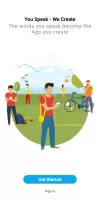



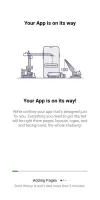
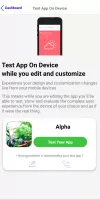

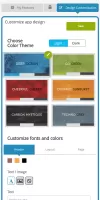

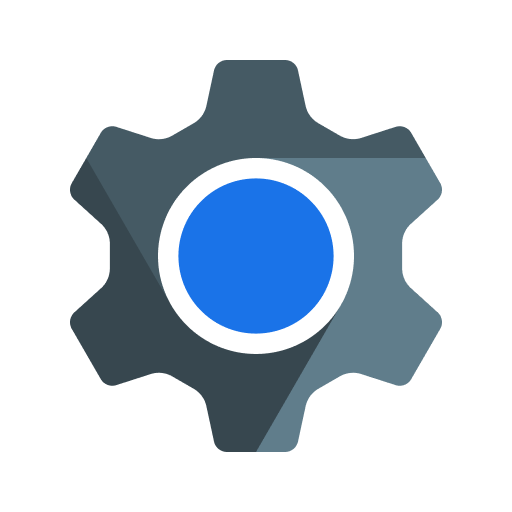
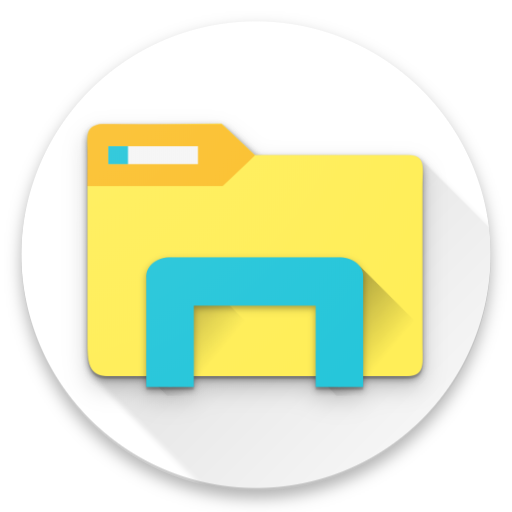

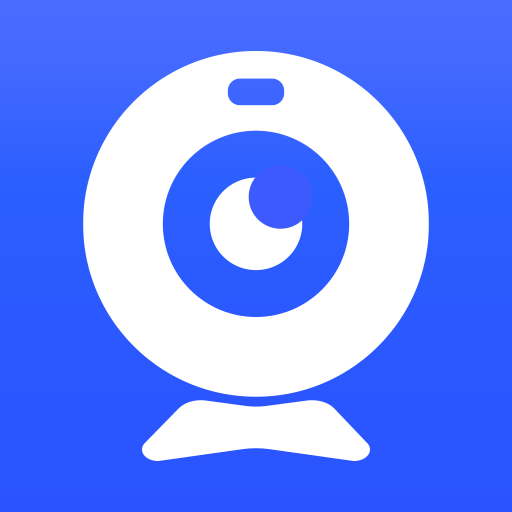
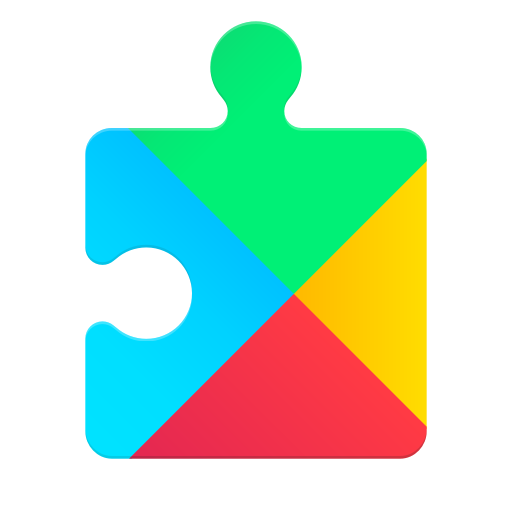

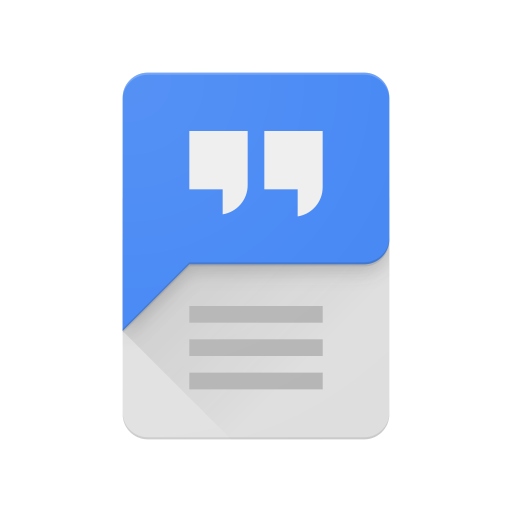
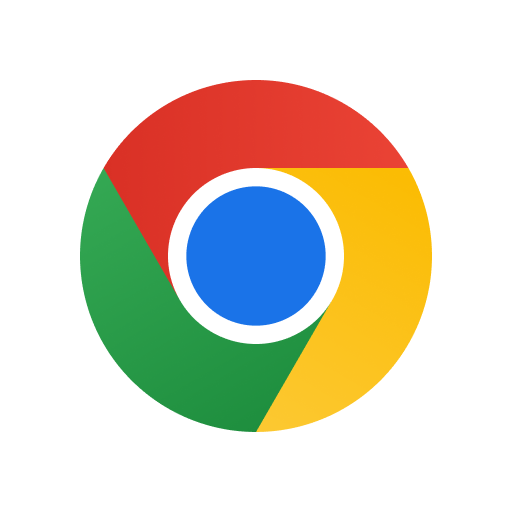
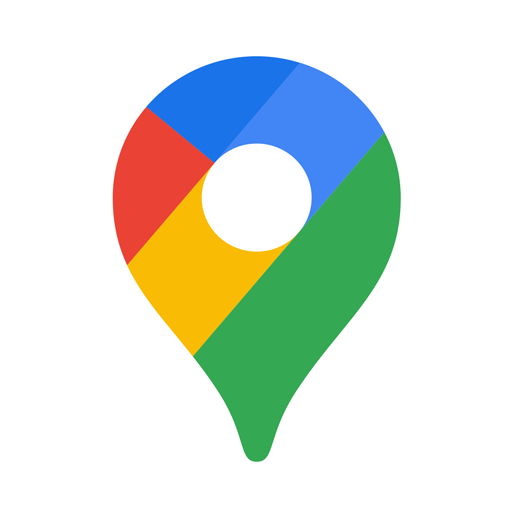










Allows users to create apps without programming knowledge
Users can build and publish apps in a short time
Appy Pie subscriptions are relatively cheap
Offer 24/7 customer support
Some of the available templates and themes look outdated
Some advanced features (such as in-app purchases) require additional fees or rely on third-party services